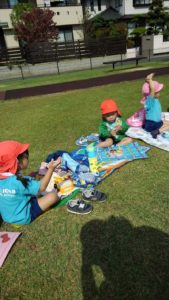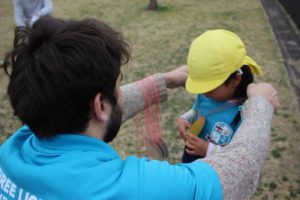Promoting children’s independence is an important part of the Early Years Foundation Stage; as children grow and develop they naturally become more independent. Early Childhood Educator and founder of the Montessori approach, Maria Montessori, encouraged adults to “never help a child with a task at which he feels he can succeed” and this translates well to the Early Years Foundation Stage.
As we look at the “Characteristics of Effective Learning” set out in the EYFS we see that “being willing to have a go” “keeping trying” “having their own ideas” and “choosing ways to do things” all feature and these are all signs of emerging and developing independence.
Maria Montessori issued the advice for adults to not help children with tasks they felt they could do as she had observed that often adults stifle children’s emerging independence by ‘taking over’ and hurrying along.
In EYFS settings it is considered best practice for adults to take a step back and allow children agency over their choices and to be as independent as possible in carrying them out. For example, children are encouraged to pour their own water, put on their own coats and make their own choices about what to play with.
If you would like to encourage your child’s independence at home as we do in school, here are some good starting points;
1. Mix up Meal Times
Many parents report that meal times with their children can be a battle ground and a source of stress. From refusing to eat to stand offs over dessert, food is certainly one way that children like to assert their independence. A more laid-back approach to meal times at home can channel children’s desire for independence productively.
Babies over 6 months can usually feed themselves at the table and using a baby led weaning approach promotes early independence. For older children, try serving food in the centre of the table and allowing them to select and serve their own portion size; this allows them to improve their hand eye co-ordination, learn about how much food they need to eat to feel full and children tend to be more willing to have a try when they get to choose and portion food themselves.
2. Clothing choices
Polka dot leggings, a tutu and a coat: sound familiar? Children are often keen to pick out their own clothes and demonstrate their independent style. Even though their choices might not always look great allowing them to make attempts at dressing will pay off in the long run. If your child tends to choose outfits that are not suitable for the weather or for what you’re doing that day then a way to prevent arguments in the morning might be to choose clothes together the night before and leave them out for your child to put on independently in the morning. Younger toddlers and babies who can’t put on a whole outfit can still be encouraged in their independence, for example, you could encourage them to lift their arms to put on a shirt, or put their feet into their shoes.
3. Use your words
Verbal encouragement is a big deal to children; they don’t always automatically know when adults are pleased with their actions so it’s important that we tell them. Especially if you are looking to build a positive behaviour system, it’s important to spend much more time praising behaviour you like than dealing with behaviour you don’t.
Most children want to be independent and become frustrated when they are not allowed to be. By giving verbal permission, encouragement and praise for our children’s attempts at being independent, we validate them. When children feel validated in their attempts, they are likely to seek out further opportunities to exercise their independence and practice makes perfect!
Saying things like; “Have a try” “You can do it” “I know you can do that yourself” and “I trust you” are good ways to show that you appreciate your child’s attempts at being independent.
4. Give them responsibilities
Children thrive off of being given responsibilities and being part of a group, or in this case a family. Their responsibilities at home help them to feel part of what the grow- ups are doing, and most children will take their roles pretty seriously. It might be pairing up the socks, laying the table for a meal or emptying the dishwasher in the morning. All of these things give children a sense of belonging and participating in family life as well as building life skills and getting a few chores done along the way!
5. Acknowledge it for what it is

Too often as parents we are busy rushing around and write off the child who screams about wanting to do up their own coat or shoes as being “difficult” or “naughty” but actually this is just a child expressing frustration at having their attempts at independence squashed. Taking a step back, and acknowledging that this is what is going on is a good way to encourage that independence your child so desperately wants.
This may mean allowing a bit of extra time for your child to try to put that coat on before you leave, or setting off a bit earlier so that your toddler can walk rather than sit in the stroller. Of course, this is not always practical and that’s fine! In these situations, it is perfectly okay to tell your child “I am so sorry, but we don’t have time to walk to the shops today we need to use the stroller” but in this situations expect some frustration to be expressed and just acknowledge it for what it is. Simply saying something like “Oh, it’s very frustrating that you can’t walk. I know you wanted to” instead of “Stop crying! Don’t be naughty” let’s your child know that you get it, and this understanding will allow independence to flourish.








